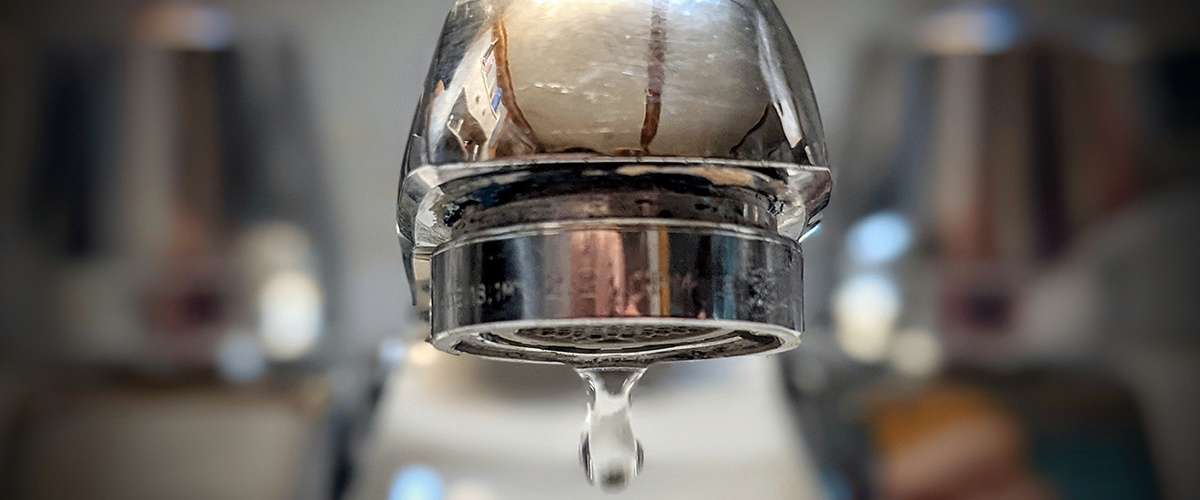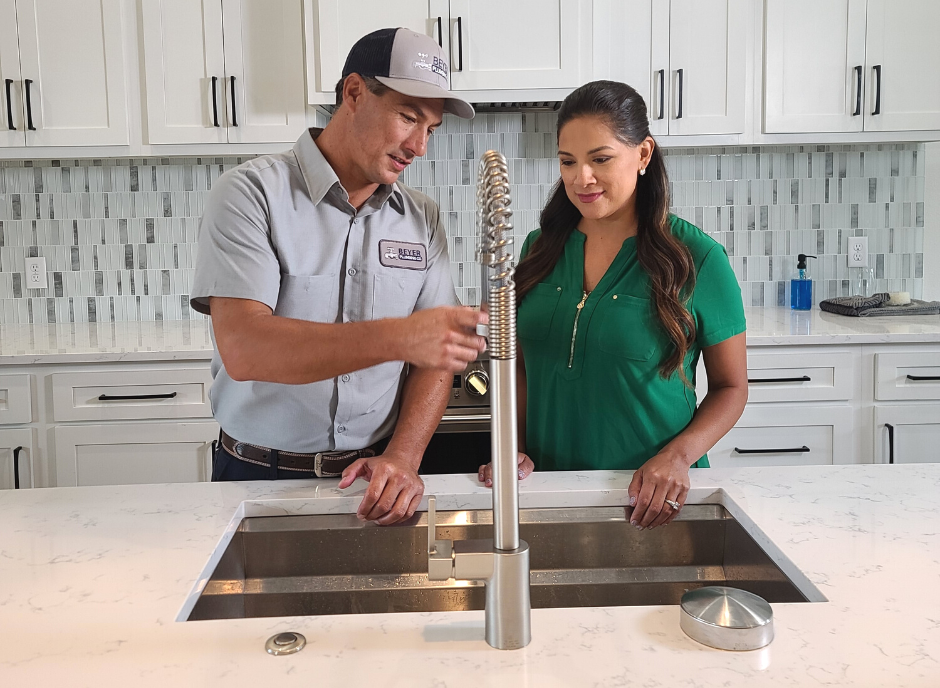Your Relevance of Fixing a Faulty Faucet
Your Relevance of Fixing a Faulty Faucet
Blog Article
Just how do you actually feel when it comes to Why It's Important to Fix Leaky Faucets?

Leaking faucets may appear like a minor aggravation, however their impact surpasses just the inconvenience of the audio. From wasting water to incurring unneeded financial prices and health and wellness threats, disregarding a trickling faucet can bring about different consequences. In this post, we'll look into why it's crucial to address this usual home problem immediately and properly.
Wastefulness of Water
Environmental Impact
Dripping faucets contribute considerably to water waste. According to the Epa (EPA), a solitary faucet dripping at one drip per secondly can lose more than 3,000 gallons of water per year. This not just pressures water resources but likewise affects ecosystems and wild animals based on them.
Step-by-Step Overview to Taking Care Of a Dripping Faucet
Tools Required
Before attempting to deal with a leaking tap, gather the essential devices, including an adjustable wrench, screwdrivers, substitute parts (such as washers or cartridges), and plumber's tape.
Typical Tap Issues and Their Solutions
Determine the type of tap and the certain problem creating the drip. Usual problems include worn-out washers, rusty valve seats, or malfunctioning O-rings. Refer to maker directions or on the internet tutorials for detailed guidance on fixings.
Financial Costs
Increased Water Costs
Beyond the ecological influence, trickling taps can blow up water expenses significantly. The built up waste in time converts right into greater energy costs, which can have been avoided with timely repair work.
Possible Home Damage
Moreover, long term leaking can bring about damage to components and surfaces surrounding the faucet. Water buildup can cause staining, deterioration, and even architectural problems if left ignored, resulting in extra repair service prices.
Health Worries
Mold And Mildew and Mildew Development
The consistent visibility of moisture from a dripping faucet develops an ideal environment for mold and mildew growth. These fungi not only compromise indoor air top quality however additionally position health threats, especially for individuals with breathing problems or allergic reactions.
Waterborne Illness
Stagnant water in trickling taps can become a breeding place for bacteria and various other pathogens, enhancing the danger of waterborne conditions. Contaminants such as Legionella bacteria prosper in stationary water, possibly resulting in significant diseases when ingested or breathed in.
Do it yourself vs. Specialist Repair service
Benefits and drawbacks of DIY Repair Work
While some might try to fix a leaking tap themselves, do it yourself repair work come with their very own set of obstacles. Without proper understanding and tools, do it yourself attempts can intensify the issue or lead to insufficient repair work, prolonging the trouble.
Advantages of Hiring a Specialist Plumber
Hiring an expert plumber ensures that the underlying source of the dripping faucet is addressed effectively. Plumbers possess the expertise and equipment to detect and fix tap issues successfully, saving time and lessening the risk of additional damages.
Environmental Obligation
Individual Payment to Conservation
Taking responsibility for fixing trickling faucets straightens with broader efforts towards water conservation and environmental sustainability. Every person's actions collectively make a considerable impact on maintaining precious resources.
Lasting Living Practices
By prioritizing prompt fixings and embracing water-saving habits, individuals contribute to sustainable living practices that benefit both existing and future generations.
Safety nets
Routine Upkeep Tips
To avoid trickling taps, do regular upkeep such as cleaning aerators, examining for leakages, and changing worn-out parts quickly. In addition, take into consideration installing water-saving tools or updating to much more efficient fixtures.
Relevance of Prompt Repair Works
Attending to leaking faucets as soon as they're seen prevents additional water waste and prospective damage, ultimately saving both water and cash over time.
Influence On Residential Property Value
Perception of Well-Maintained Home
Keeping a property in good condition, including dealing with upkeep issues like leaking taps, improves its viewed worth and charm amongst possible buyers or tenants.
Influence on Resale Value
Characteristics with well-kept plumbing fixtures, including taps, command higher resale worths in the realty market. Attending to trickling faucets can add to a positive perception during home examinations and negotiations.
Conclusion
Resolving a leaking faucet surpasses mere ease; it's an important step toward saving water, minimizing financial expenses, and guarding health and building. Whether through DIY repair services or specialist assistance, doing something about it to deal with leaking taps is a little yet impactful method to advertise accountable stewardship of resources and contribute to a healthier, extra sustainable future.
How to Fix a Leaky Faucet: Step-by-Step Repair Guide
A leaky faucet may seem like a simple annoyance, but if it's not fixed promptly, that leak could cost hundreds to potentially thousands. From water damage to mold, mildew, and high water bills, even a tiny leak can be catastrophic if left unattended. Damage like this can even affect the overall value of your home, so it's important to take the right approach for leaky faucet repair. You may need the help of a plumber in some cases, but we've got a few tips you can try on how to fix a leaky faucet before calling the pros.
Four Faucet Types
When you're learning how to fix a leaky faucet, the first step is knowing what kind of faucet you're working with! There are four common types.
Cartridge Faucets
Cartridge faucets come in one- or two-handled varieties. In one-handled cartridge faucets, hot and cold water combines in a single cartridge. In the two-handled versions, hot and cold water are controlled separately and mixed in the faucet.
Ball Faucets
Ball faucets have a single lever you push up and down to adjust the pressure and rotate to change the temperature. A slotted metal ball controls the amount of water allowed into the spout.
Compression Washer Faucets
They're the oldest type of faucet, but they're still used in many homes — especially older ones. Compression faucets have two separate handles that, when turned, raise or lower the washer that seals a water valve. This valve stops water from flowing through the faucet when it is turned off.
Disc Faucets
Disc faucets rarely need to be repaired due to their maintenance-free design. The water flow is controlled by two discs — the upper one raises and lowers against a fixed lower disc, creating a watertight seal. If your disc faucet starts leaking, you may need to replace the seals or clean residue buildup from the inlets.
Fixing a Leaky Faucet
Step 1: Turn Off the Water
Whether you're learning how to fix a leaky bathtub faucet or how to fix a leaky kitchen faucet, always turn off the water supply to your working area when you're fixing a leak. The last thing you want is a flood added to your list of things to fix.
Look for the shutoff valves below your sink or around the tub and turn them clockwise to stop the water flow. If your faucet doesn't have shutoff valves, you may need to turn off the water for the whole house. Check to make sure it's off by turning the faucet on. If nothing comes out, you're ready to start the repair.
Step 2: Take Apart the Faucet
How you disassemble your faucet depends on the type of fixture you have. You can use a flathead screwdriver to remove the caps on top of the handle or handles for cartridge and compression faucets. Inside, you should see handle screws. Unscrew these with a screwdriver to remove the handle.
Disc- and ball-style faucets will typically have an inlet screw near the handle, and removing that will reveal the interior of the faucet.
Detach the Valve Stem
For cartridge- and compression-style faucets, you'll see the inner valve stem or cartridge once you remove the faucet handles. If you have a compression faucet, unscrew the brass valve stem. If you have a cartridge faucet, pull out the cartridge. If your cartridge has been in place for a while, it may require some tools or extra force to remove it due to mineral deposits.
Examine and Replace Parts
Once you've removed the parts, check them out to confirm what needs to be replaced. You may see corroded rubber washers, O-rings, stems, or cartridges. On a ball-style faucet, check the seats and springs for damage.
If you need to repair a leaky disc faucet, check the inlet and seals on the lower disc.
Once you determine what parts must be replaced, visit your local hardware store. Bring the damaged parts with you to ensure you can purchase the correct components to replace them.
Clean Valves and Faucet Cavity
If you've removed a stem or cartridge, you may notice mineral buildup in the faucet's threads. Use white vinegar to clean the valve seat by soaking it for a few minutes, then scrub it away with a soft toothbrush and rinse with warm water. You can also clean the interior of the faucet in the same way.
Reassemble the Faucet
Once your faucet is cleaned and the required parts have been replaced, it's time to reassemble it. Put the pieces back together and slowly turn the water supply back on. Doing this slowly is crucial because too much initial water pressure can damage the new hardware you've just installed.
https://homewarranty.firstam.com/blog/how-to-fix-leaky-faucet

Hopefully you enjoyed reading our section on Why It's Important to Fix Leaky Faucets. Thanks so much for taking the time to browse our piece of content. Sharing is nice. Helping others is fun. I value your readership.
Report this page